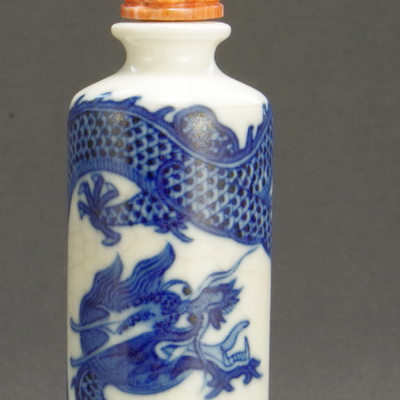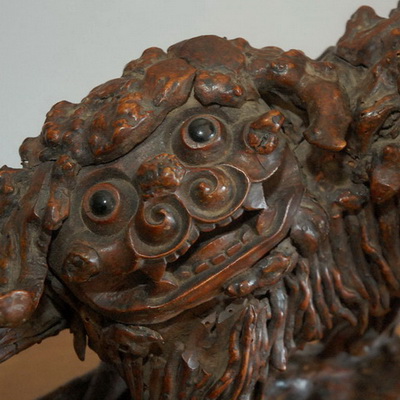Asian arts.Snuff is a form of tobacco which has been ground into a powder and mixed with aromatic spices. A small quantity is placed on the back of the hand and inhaled, causing the user to squeeze. First introduced into Europe in the late 16th century, snuff quickly became popular right across the continent, and was kept in small lidded boxes of silver, enamel and even gold. It did not reach China until sometime in the mid 17th century, most probably introduced by emissaries to the Chinese Imperial court via Portuguese traders and Japan. The Emperor liked the new concoction enough for it to have been recorded that he requested more.
At first the use of snuff was confined to the Imperial Palace and the court mandarins, who soon found the little boxes too bulky and inconvenient to carry about in their robes, favoring a small bottle instead. Initially these bottles were similar to ones traditionally used to carry liniment, ointment and other medicines, which was natural enough, since they viewed snuff as being medicinal, able to clear the head and nasal passages. A long thin spoon was added to the inside of the bottle’s stopper to facilitate removal of the snuff powder. And so, the snuff bottle was invented.
As with their European counterpart the snuff box, these little bottles soon became precious objects for adornment and embellishment by skilled craftsmen. The art world now recognizes the importance of the snuff bottle, because they mirrored in miniature the artistic achievements of the Qing dynasty for the next 250 years.Asian arts..Asian arts..Asian arts..Asian arts.
Strasbourg, France
W: http://cysteme.fr
E: contact@cysteme.fr










Template for a new
/0 Comments/in News /by lucLorem ipsum dolor sit amet, consectetur adipiscing elit. Sed non risus. Suspendisse lectus tortor, dignissim sit amet, adipiscing nec, ultricies sed, dolor. Cras elementum ultrices diam. Maecenas ligula massa, varius a, semper congue, euismod non, mi. Proin porttitor, orci nec nonummy molestie, enim est eleifend mi, non fermentum diam nisl sit amet erat.
Read more →